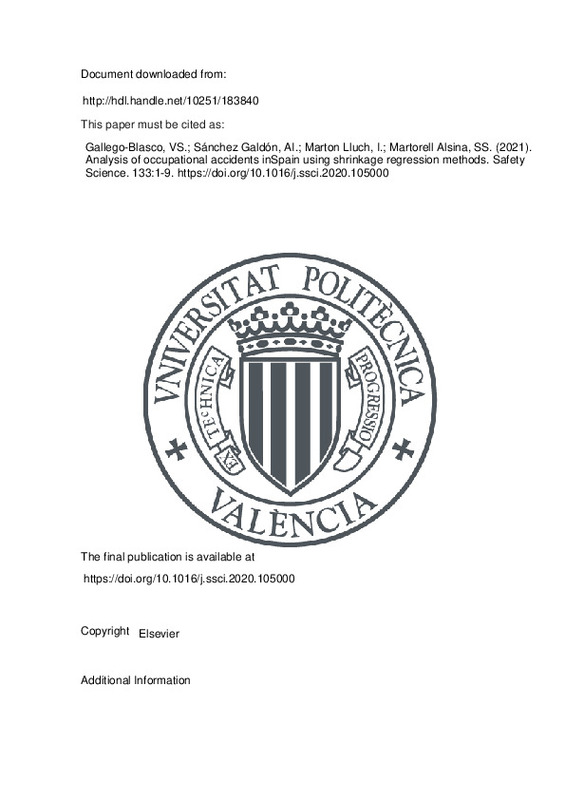|
Resumen:
|
[EN] This paper analyses the relationship between the evolution of occupational health indicators, i.e. frequency rate (FR), severity rate (SR) and days lost per accident (DLA), and the performance of relevant influencing ...[+]
[EN] This paper analyses the relationship between the evolution of occupational health indicators, i.e. frequency rate (FR), severity rate (SR) and days lost per accident (DLA), and the performance of relevant influencing factors related to the labour market, the productivity structure and the economy using regression shrinkage methods: the Lasso, Elastic Net and AdaLasso regression methods. The advantage of applying these methods is that they overcome two common problems faced in this type of analysis: the number of input factors greatly exceeds the number of observations (data set) and the multicollinearity of the input factors.
A case study is included focused on occupational accidents in Spain in the time period 1995-2017. The analysis covers an unstable period in the Spanish labour market consisting of stages of economic growth and deep recession as well as changes in the structure of the production system. The shrinkage methods identified and selected the most important factors that significantly affected the occupational health indicators. The AdaLasso method provided the best results for FR y DLA, based on the bayesian information criterion (BIC) and performed slightly worse than Elastic Net for SR. It can be concluded that AdaLasso seems to be the most consistent and robust method and also explains the different relationships with the least number of factors (variables).
Based on the results of the AdaLasso regression method, Factor Hours Worked showed a strong positive relationship with all three indicators, while the Total Females Employed and Agriculture Sector factors showed a strong negative relationship with FR and SR. However, several factors affecting either FR or DLA seemed to have no affect on SR, while others affected each other in the same way but with weaker or stronger relationships. The results found were not only consistent with the results of the health indicators analysed in previous work, but also provided additional insights into occupational indicators that have not been covered up to now.
[-]
|







![[Cerrado]](/themes/UPV/images/candado.png)


